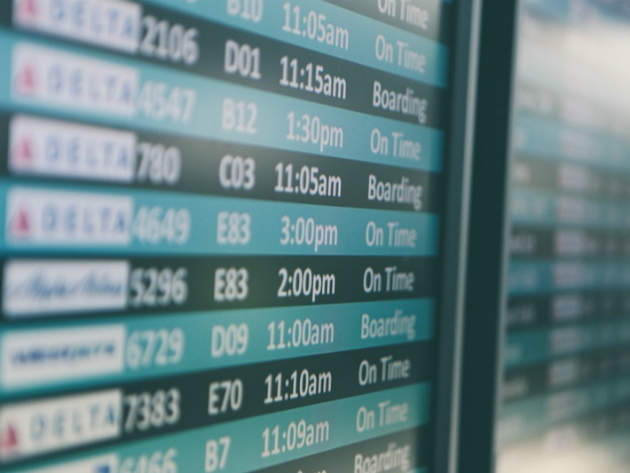
As a result of the European aviation sector boom over the past decade, the fragmentation of airspace across the continent’s borders has led to numerous management inefficiencies, as well as increased greenhouse gas emissions.
If left unchanged, the current system could end up costing airlines an extra €5bn each year, according to the European Commission’s estimates, as well as pushing up the price of air travel for passengers.

Discover B2B Marketing That Performs
Combine business intelligence and editorial excellence to reach engaged professionals across 36 leading media platforms.
To tackle these challenges, the Single European Sky (SES) initiative was set up in 2004 as a holistic strategy to reduce the cost of air traffic service provision and increase Europe’s capacity to meet forecasted growth in air traffic demand.
The cross-industry initiative that is currently developing, testing and validating concepts and technologies to modernise Europe’s air traffic is known as the Single European Sky ATM Research (SESAR) programme.
The programme reached a big milestone in January this year, when a SESAR delegation visited the first operational version of the advanced air traffic control (ATC) platform known as 4-FLIGHT at the Marseille pilot centre.
The 4–FLIGHT system, which is being co-financed by the European Union (EU), uses state of the art technology to modernise the French en-route air traffic management system.

US Tariffs are shifting - will you react or anticipate?
Don’t let policy changes catch you off guard. Stay proactive with real-time data and expert analysis.
By GlobalDataSESAR’s achievements to date
In 2015, the total number of passengers travelling by air in the EU was 918 million, a 4.7% increase on the previous year, and these numbers continue to grow at a fast rate. By 2035, airports across Europe are expected to be handling 14.4 million flights and 1.4 billion passengers.
All journeys are controlled via air traffic management (ATM), which affects when, how far, how high, how fast and how efficiently aircraft fly.
This surge in demand means that the European ATM system is under increased pressure. The latest figures available show that in 2014, the system controlled 26,800 flights on average, every single day.
As a result, SESAR aims to deliver a “high performing air traffic management infrastructure that will enable the safe and environmentally friendly operation and development of air transport,” according to the programme’s website.
Some of its benefits directly impact the environment, as well as reducing costs and improving airport capacity. SESAR aims to provide a 10% CO2 reduction target by reducing fuel burn between 250kg and 500kg per flight. It also plans to increase network capacity by 80% to 100% and accommodate between 220,000 and 440,000 of the estimated 1.9 million additional flights per year to be landing at and departing from European airports.
Some of the benefits can already be noticed. According to the Commission’s statistics, average delays for en-route air traffic flow management are now close to just 30 seconds per flight as a result of the SES policy, “a remarkable achievement compared to the heavy delays that occurred in the 1990s and 2000s.”
4-FLIGHT marks a new milestone
The start of this year marked a major step forward for the European programme, with the installation of 4-FLIGHT at the Marseille Air Traffic Control Centre (ACC) in France, which in 2016 exceeded one million controlled flights for the first time in its history.
This makes Marseille the third testing base for the system, after the the French air navigation service provider DSNA and ATM specialist Thales previously delivered other versions to Reims and Aix-en-Provence ACCs in 2015.
The current version offers the most advanced system in terms of interoperability and is fully compliant with all new European standards.
One of its main features is Coflight, a new flight data processing system which supports sophisticated and complex control tools. Coflight’s functions include electronic negotiation of coordination data, conflict detection within a five-minute look-ahead timeframe, as well as cooperative tools that increase safety and efficiency.
More tests with live traffic are planned for March, and the system is expected to deliver an increase of around 10% in overall capacity.
Currently, France hosts 3 million flights a year, the largest number of flights in Europe. The French air navigation service handled a total of 10,820 flights on 8 July 2016, setting a new record for daily air traffic in Europe.
During a visit to Marseille ACC, delegates from the European Commission, the SESAR Deployment Manager (SDM) and the Innovation and Network Executive Agency (INEA) assessed the system’s capabilities on a guided tour through 4-FLIGHT’s supervisory and simulation rooms.
“The implementation of 4-FLIGHT […] represents a crucial milestone not only for French ATM but for the entire European network,” said Massimo Garbini, managing director at SDM.
Henrik Hololei, director general for Mobility and Transport at the European Commission similarly described the 4-FLIGHT project as “an essential building block for further modernisation of the French airspace, taking Europe one step closer to achieving the Single European Sky.”





